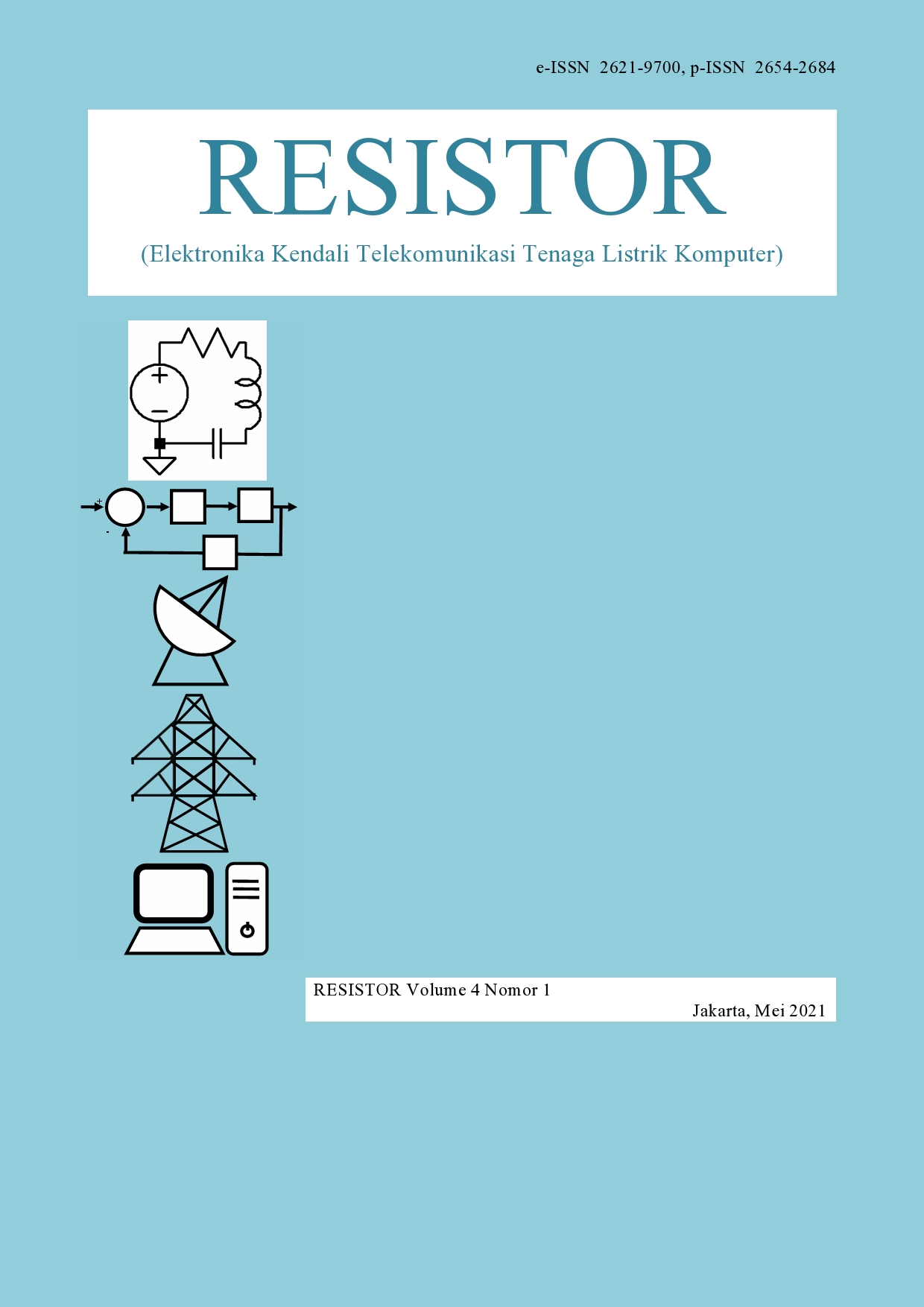Efisiensi Daya Listrik Pada Dispenser Dengan Jenis Merk Yang Berbeda Menggunakan Inverator
DOI:
https://doi.org/10.24853/resistor.4.1.37-42Abstract
Dispenser adalah salah satu alat rumah tangga yang menggunakan listrik untuk dapat memanaskan elemen pemanas dan menjalankan mesin pendinginnya. Dispenser ada yang menggunakan prinsip kerja dengan elemen pemanas dan mesin pendingin (compressor). Dispenser atau tempat air minum adalah salah satu peralatan listrik atau elektronik yang didalamnya terdapat heater sebagai komponen utamanya, heater berfungsi untuk memanaskan air yang ada pada tabung penampung, heater umunya memiliki daya sekitar 200-300 Watt. Penggunaan Inverator telah beredar di pasaran dan digunakan oleh setiap rumah tangga, bisnis, industri maupun perkantoran di Indonesia. Berdasarkan perbandingan efisiensi daya dan daya penggunaan listrik sebelum dan sesudah menggunakan inventor pada rumah tangga dan memiliki selisih antara Sebelum Pemakain Inventor daya aktif pada merek A sebesar 532 Watt, pada merek sebesar B 563 Watt, pada merek C sebesar 329 Watt dan Sesudah Pemakain Inventor daya aktif pada merek A sebesar 517 Watt, pada merek sebesar B 560 Watt, pada merek C sebesar 548 Watt. The dispenser is a household appliance that uses electricity to heat the heating element and run the cooling machine. There are dispensers that use a working principle with a heating element and a cooling machine (compressor). The dispenser or drinking water container is one of the electrical or electronic equipment in which there is a heater as its main component, the heater functions to heat the water in the storage tube, the heater generally has a power of around 200-300 Watts. The use of Inverator has been circulating in the market and is used by every household, business, industry and office in Indonesia. Based on the comparison of power efficiency and power use of electricity before and after using the inventor in the household and the difference between Before Use Inventor, active power in brand A is 532 Watts, for brands B 563 Watts, on brand C is 329 Watts and After Use Inventor power is active in brand A of 517 Watts, in brands of B 560 Watts, in brand C of 548 Watts.References
I. Journal and T. Special, “Study of Automatic Water Dispenser,” vol. 8, no. 1, pp. 88–91, 2017.
R. Rimbawati, P. Harahap, and K. U. Putra, “Analisis Pengaruh Perubahan Arus Eksitasi Terhadap Karakteristik Generator (Aplikasi Laboratorium Mesin-Mesin Listrik Fakultas Teknik-Umsu),” RELE (Rekayasa Elektr. dan Energi) J. Tek. Elektro, 2019.
H. Azzari Aldaf, I. Hartami Santi, and Y. Primasari, “Design of Tandon and Automatic Filling Tools on Dispensers With Ultrasonic Sensors,” JARES (Journal Acad. Res. Sci., vol. 4, no. 1, pp. 55–64, 2019.
Rimbawati, N. Ardiansyah, and Noorly Evalina, “PERANCANGAN SISTEM PENGONTROLAN TEGANGAN,” SEMNASTEK UISU, vol. 1, pp. 14–20, 2019.
B. Nugraha and D. A. Ramadhany, “‘ SMART DISPENSER ’ DISPENSER PINTAR DENGAN PENGONTROL SUHU DAN PENGHEMAT ENERGI,” vol. 14, no. 2, 2015.
I. Ihara, “Ultrasonic sensing: Fundamentals and its applications to nondestructive evaluation,” Lect. Notes Electr. Eng., vol. 21 LNEE, pp. 287–305, 2008.
F. I. Pasaribu, S. A. Lubis, S. Imam, and P. Alam, “Superkapasitor Sebagai Penyimpan Energi Menggunakan Bahan Graphene,” vol. 2, no. 2, pp. 66–72, 2020.
N. Evalina, M. K. Riza, A. Arfis, and Rimbawaty, “Pemanfaatkan Bahan Bakar Sampah Plastik dengan Menggunakan Pembangkit Listrik Hot Air Stirling Engine,” Semnastek UISU, pp. 71–77, 2019.
William D. Stevenson Jr, “Analisa Sistem Tenaga Listrik.” p. 406, 1996.
and B. H. W. Dugan R C, McGranaghan M F, Santoso S, “Electrical Power Systems Quality. 2nd. ed.,” USA: McGraw-Hill. p. 2002, 2002.
P. Harahap, “Pengaruh Temperatur Permukaan Panel Surya Terhadap Daya Yang Dihasilkan Dari Berbagai Jenis Sel Surya,” RELE (Rekayasa Elektr. dan Energi) J. Tek. Elektro, vol. 2, no. 2, pp. 73–80, 2020.

